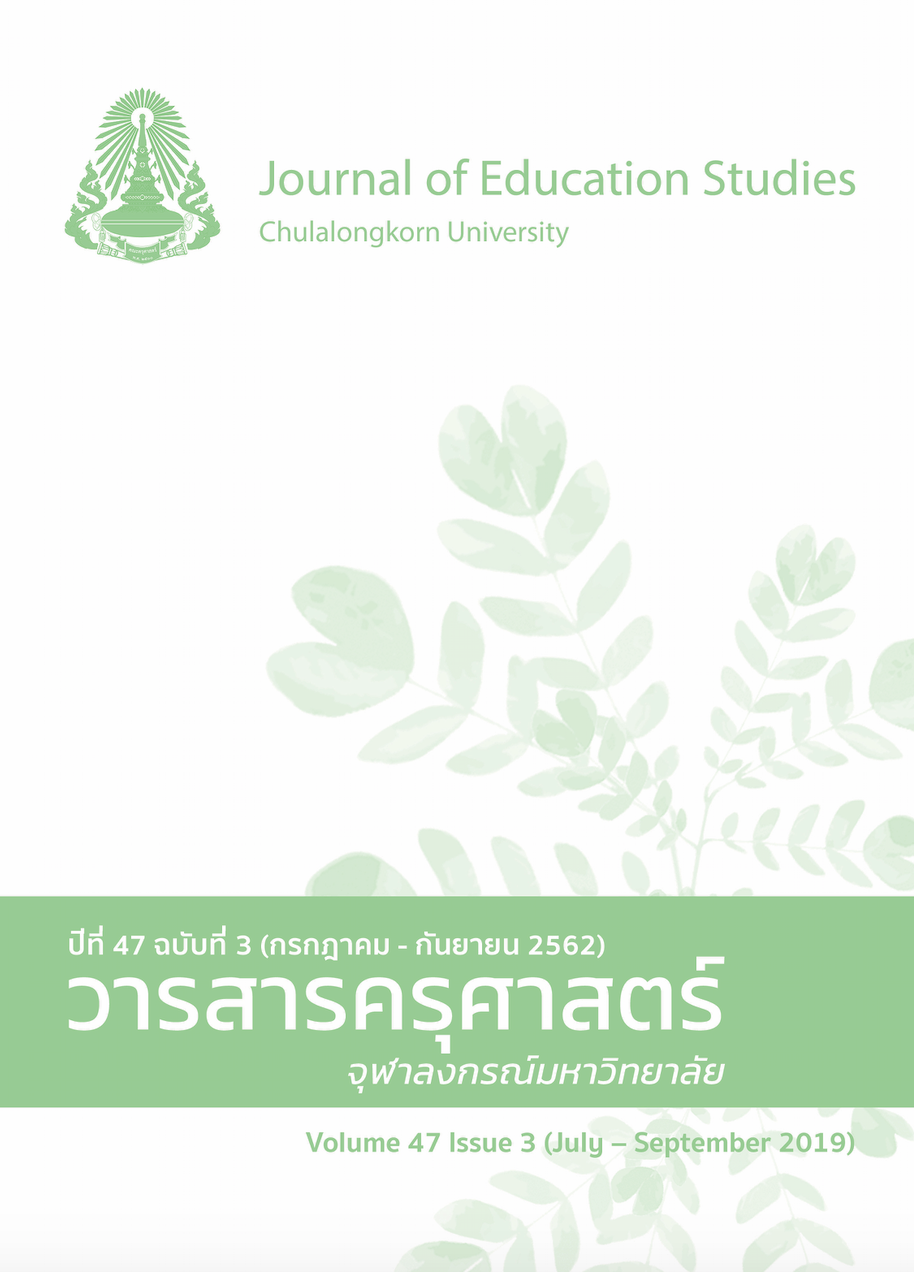A Development of Indicators of Living Together with Care in Urban Communities
Keywords:
DEVELOPMENT INDICATORS, LIVING TOGETHER WITH CARE, URBAN COMMUNITIESAbstract
The objectives of this study were 1) to develop indicators of living together with care in urban communities and 2) to verify the validity of the model of living together with care in urban communities. The participants were 5,807 people in 24 districts of Bangkok. The instrument used was questionnaire. The data were analysed by frequency, percentages and confirmatory factor analysis.
Results of this research were as follows: 1) The indicators of living together with care in urban communities consisted of 3 main factors, 8 minor factors and 50 indicators. The first main factor is ‘body’, which consists of 6 indicators of sacrifice, 5 indicators of respect for social rules, and 5 indicators of mutual recognition. The second main factor, ‘speech’, consists of 5 indicators of propriety and 6 indicators of creativity. ‘Mind’, the third main factor, consists of 7 indicators of positive attitude towards differences between individuals, 8 indicators of goodwill towards others, and 8 indicators of maintain their own goodness. 2) The results of second confirmatory factor analysis with the use of LISREL program showed that the model fitted the empirical data. The construct validity of models was consistent with empirical data with chi-square = 1344.94, p-value = 0.16, Goodness of Fit Index (GFI) = 0.85, Adjusted Goodness of Fit Index (AGFI) = 0.81 and Root Mean Square Error of Approximation (RMSEA) = 0.08.
References
ภาษาไทย
ชูพินิจ เกษมณี. (2555). ความหลากหลายทางวัฒนธรรมในสังคมพหุลักษณ์. กรุงเทพมหานคร: สำนักงานคณะกรรมการวัฒนธรรมแห่งชาติ กระทรวงวัฒนธรรม.
น้ำทิพย์ พรพัฒนานิคม. (2554). การศึกษาหลักสารณียธรรมเพื่อเสริมสร้างมนุษย์สัมพันธ์ของนักเรียนในโรงเรียนราชวินิต มัธยม เขตดุสิต กรุงเทพมหานคร (วิทยานิพนธ์พุทธศาสตรมหาบัณฑิต ไม่ได้ตีพิมพ์). มหาวิทยาลัยมหาจุฬาลงกรณ์ราชวิทยาลัย, พระนครศรีอยุธยา.
พระพรหมคุณาภรณ์ (ป.อ.ปยุตโต). (2551). พจนานุกรมพุทธศาสตร์ ฉบับประมวลธรรม (พิมพ์ครั้งที่ 16). กรุงเทพมหานคร: เอส.อาร์ พริ้นติ้งแมสโปรดักส์.
ศรีศักร วัลลิโภดม. (2558). ชุมชนบ้านครัวคือบ้านบางระจัน. สืบค้นจาก https://lek-prapai.org/home/
view.php?id=940
สำนักงานสถิติแห่งชาติ. (2554). การสำรวจสภาวะทางสังคมและวัฒนธรรม พ.ศ. 2554. กรุงเทพมหานคร: สำนักพิมพ์คณะรัฐมนตรีและราชกิจจานุเบกษา.
สำนักผังเมืองกรุงเทพมหานคร. (2555). แนวโน้มการเติบโตของชุมชนในเขตกรุงเทพมหานคร ปี พ.ศ.2554. [เอกสารอัดสำเนา]. กรุงเทพมหานคร: บี เอส การพิมพ์.
สำนักงานคณะกรรมการพัฒนาเศรษฐกิจและสังคมแห่งชาติ [สคช.]. (2553). ดัชนีความอยู่เย็นเป็นสุขร่วมกันในสังคมไทย พ.ศ.2549-2552. กรุงเทพมหานคร.
สุรไกร นันทบุรมย์ และ วลัย อิศรางกูร ณ อยุธยา. (2558). ผลของการใช้กิจกรรมลดอคติตามแนวคิดพหุวัฒนธรรมศึกษาที่มีต่อเจตคติความเข้าใจในความหลากหลายทางเชื้อชาติ ศาสนา และวัฒนธรรมในประชาคมอาเซียนของนักเรียนระดับมัธยมศึกษาตอนปลาย. วารสารครุศาสตร์, 43(1), 139-154.
สุภมาส อังศุโชติ, สมถวิล วิจิตรวรรณา, และ รัชนีกูล ภิญโญภานุวัฒน์. (2555). สถิติวิเคราะห์สำหรับการวิจัยทางสังคมศาสตร์และพฤติกรรมศาสตร์: เทคนิคการใช้โปรแกรม LISREL (พิมพ์ครั้งที่ 3). กรุงเทพมหานคร: เจริญดีมั่นคงการพิมพ์.
อมรา พงศาพิชญ์. (2549). ความหลากหลายทางวัฒนธรรม: กระบวนทัศน์และบทบาทในประชาสังคม. กรุงเทพมหานคร: สำนักพิมพ์แห่งจุฬาลงกรณ์มหาวิทยาลัย.
อรุณ รักธรรม. (2551). การบริหารบุคคลในระบบราชการไทย. กรุงเทพมหานคร. สถาบันบัณฑิตพัฒนบริหารศาสตร์.
ภาษาอังกฤษ
Defleur, M. L., & Ball-Rokeach,S. J. (1996). Theories of mass communication. London: Longman.




